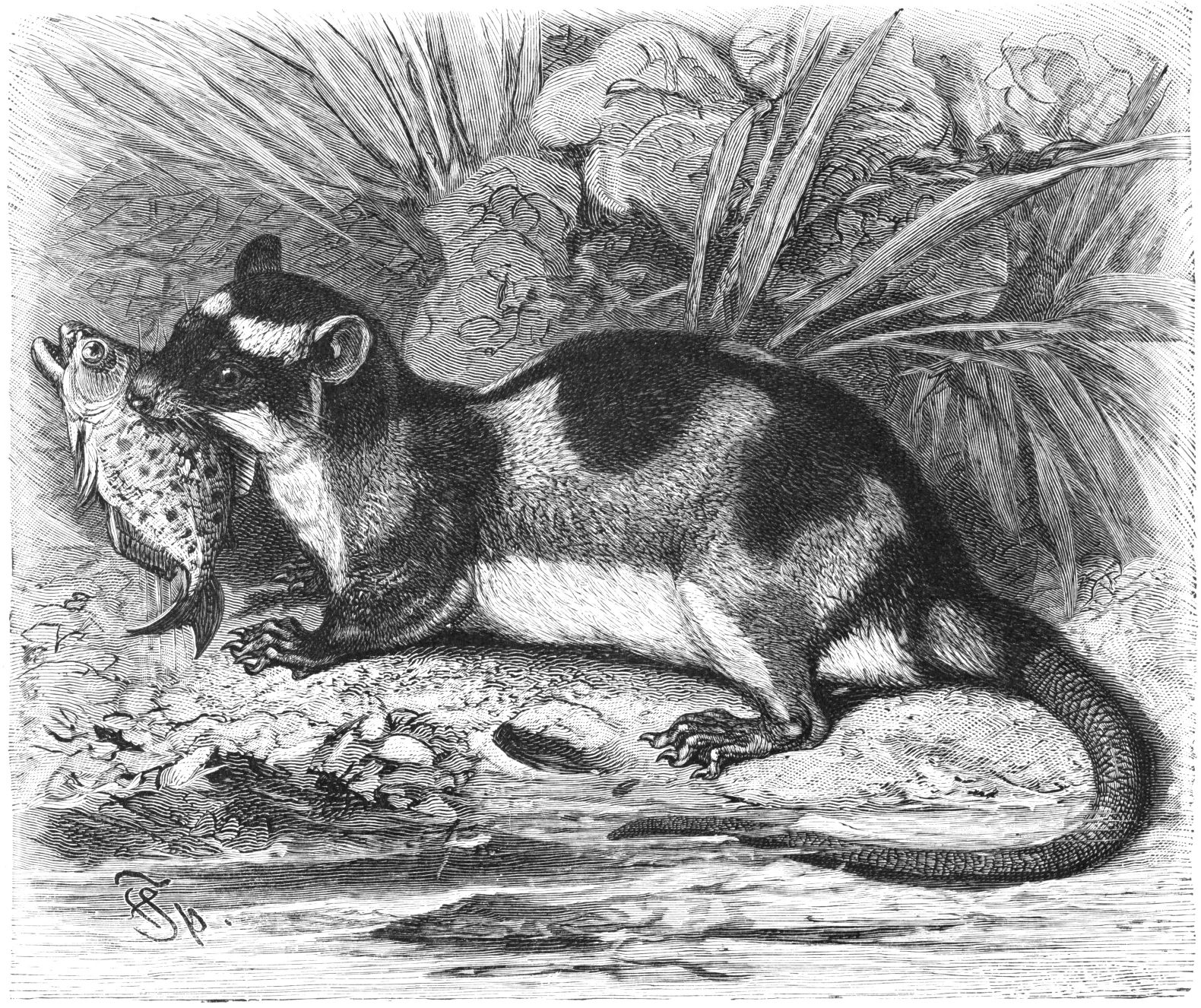- Water Opossum
image_width = 200px
status = LC
status_system = iucn3.1
trend = unknown
regnum =Animal ia
classis =Mammal ia
infraclassis =Marsupialia
ordo =Didelphimorphia
familia =Didelphidae
subfamilia =Didelphinae
genus = "Chironectes"
genus_authority =Illiger , 1811
species = "C. minimus"
binomial = "Chironectes minimus"
binomial_authority = (Zimmermann, 1780)The Water Opossum ("Chironectes minimus"), also locally known as the Yapok, is a
marsupial of the familyDidelphidae . It is the only member of itsgenus , "Chironectes". This creature is found in thefreshwater stream s andlake s inMexico , Central andSouth America toArgentina , and is the only living aquatic marsupial.The animal lives in bankside burrows, emerging after dusk to swim and search for
fish ,crustacean s and other aquatic animals, which it eats on the bank.Origin of the name
The local name for the Water Opossum, "Yapok", probably comes from the name of the
Oyapok River inFrench Guyana .True opossums are unique to
North America alone. The word "opossum" was taken from the nativeAlgonquian word for the animal. Though the Yapok, as well as other marsupials in South America andAustralia are called "possums," they are not closely related to theVirginia animal, and only derive their name by a generally similar shape and appearance.Physical appearance
The Yapok is a small opossum, 27-32.5 cm long, with a 36-40 cm long tail. The fur is in a marbled grey and black pattern while the muzzle, eyestripe, and crown are all black. A light band runs across the forehead anterior to the ears, which are rounded and naked. There are sensory facial bristles in tufts above each eye as well as whiskers. The animal's tail, furred and black at the base, is yellow or white at its end. The hindfeet of the Yapok are webbed, while the forefeet ("hands") are not. The forefeet can be used to feel for and grab prey as the Yapok swims, propelled by its tail and webbed back feet.
Aquatic adaptations
The Water Opossum has several adaptations for its watery lifestyle. It has short, dense fur which is water-repellent. The broad hindfeet are webbed and are used for propulsion through water, moving with alternate strokes. They are symmetrical as well, which distributes force equally along both borders of the webbing; this increases the efficiency of the water opossum's movement through the water. The Yapok's long tail aids its swimming as well.
Being a marsupial and at the same time an aquatic animal, the Water Opossum has evolved a way to protect its young while swimming. A strong ring of muscle makes the pouch (which opens to the rear) watertight, so the young remain dry, even when the mother is totally immersed in water. The male also has a pouch (although not as watertight as the female's), where he places his genitalia before swimming. This is thought to prevent it from becoming tangled in aquatic vegetation and is probably helpful in streamlining the animal as well as it is swimming quickly.
Reproduction
Yapoks mate in December and a litter of 1-5 young is born 2 weeks later in the nest. By 22 days the offspring are beginning to show some fur, and by 40 days or so their eyes are open, their bodies protruding from the mother's pouch. At 48 days of age, the young opossums detach from the nipples but still nurse and sleep with the mother.
Fossil record
The Water Opossum seems to have a history dating as far back as to the
Pliocene epoch.Holocene subfossil fragments of "Chironectes" have been discovered inSão Paulo ,Brazil . Also, there are fossil specimens from the latePleistocene -Recent cave deposits inMinas Gerais , Brazil as well as from the latePliocene inEntre Rios Province , Argentina.ubspecies
*"
Chironectes minimus argyrodytes "
*"Chironectes minimus langsdorffi "
*"Chironectes minimus minimus "
*"Chironectes minimus panamensis "References
* Database entry includes justification for why this species is near threatened
*External links
* http://www.knowyoursto.com/didelphidae/chironectes.html
Wikimedia Foundation. 2010.

